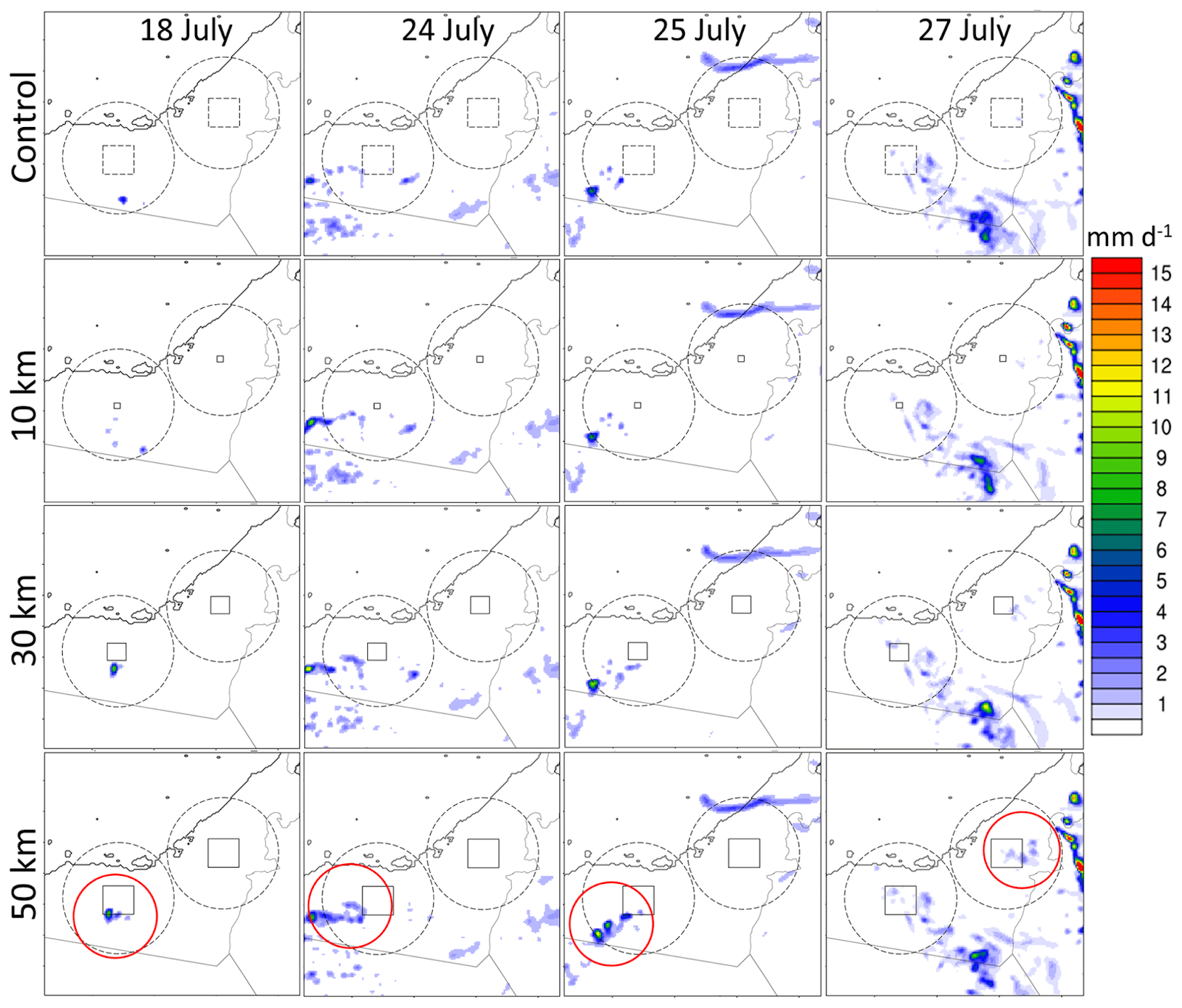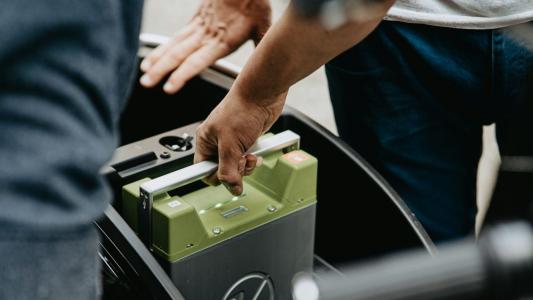This article is an installment of Future Explored, a weekly guide to world-changing technology. You can get stories like this one straight to your inbox every Thursday morning by subscribing here.
Water scarcity is a major global challenge — more than two billion people live in places with an inadequate water supply — and the effects of climate change, through increased drought and higher temperatures, could make the problem worse.
A new study suggests that large solar farms could not only help us address water scarcity indirectly (by avoiding greenhouse emissions) but directly — by literally making rain.
What goes up…
There are a few different mechanisms that can produce precipitation, and “convection” is one of them.
Convectional rainfall occurs when the sun’s heat causes water on Earth’s surface to evaporate. If the ground below this humid air is hot enough, it will warm the air, causing it to rise.
When the humid air reaches cooler temperatures higher in Earth’s atmosphere, the water vapor in it cools and condenses into droplets, forming clouds. If the process continues long enough, the droplets get bigger until eventually they become too heavy and fall to Earth as rain.
A large enough solar farm might be able to make rain while also generating clean energy.
Some researchers believe it may be possible to induce convectional precipitation, forcing rainfall in places that don’t get enough of it — we would just need to make the ground hotter than normal.
For evidence that this might work, we can look at our cities.
Asphalt, concrete, and other materials that are plentiful in cities absorb more heat than natural landscapes. As a result, large cities can become “heat islands,” with temperatures much higher than nearby rural areas. Past research suggests this can increase rainfall in areas downwind of cities.
But cities aren’t the only way to create “heat islands” — large solar farms are another.
While some of the sunlight their black solar panels attract is converted into electricity, the rest warms the surrounding air. With a large enough solar farm, we might be able to induce conduction precipitation, while also generating clean energy.
A Texas-sized solar farm in the Sahara could make it rain, but it would also cause droughts in the Amazon.
That brings up the question of how large is large enough.
A 2020 study estimated that a solar farm in the Sahara desert could make rain in nearby arid regions, while generating power for the entire world.
However, those calculations were based on a 1 million square kilometer solar farm — that’s nearly 1.5 times the size of Texas. The researchers also concluded that such a large farm would affect global weather in negative ways, too — for instance, causing droughts in the Amazon rainforest.
Making it rain
We now have a better idea of how small a solar farm could be and still have an impact on local rainfall, thanks to the United Arab Emirates (UAE).
The fifth driest nation on Earth, it has been using “cloud seeding” — where planes inject particles into clouds to make water droplets heavy enough to fall as rain — to try to cause precipitation since the 1990s.
UAE officials claim this increases their rainfall rates by as much as 30% per year, but it requires the existence of rainy clouds to seed, and the process can be dangerous for pilots.
“Maybe it’s not science fiction that we can produce this effect.”
Oliver Branch
In search of alternative ways to make rain, the nation funded a University of Hohenheim study that used a weather prediction system to see how large an “artificial black surface” (ABS) would need to be to increase rainfall in the UAE.
In the paper, they note that this surface could be created using solar panels, black mesh, or some other material painted black. To simulate it in the prediction system, they increased the amount of sunlight the land would absorb to 95%.
They created models with ABSs in five sizes — 10, 20, 30, 40, and 50 square kilometers — positioned so that they would get the moist air needed to kick off the convectional rainfall process from the daily breeze coming in from the Arabian Gulf.
“Ten rainfall enhancement ‘events’ per year would supply enough water for 3,000 or 15,000 people.”
Branch, O. et al. 2024
They then simulated 24 hours of weather on four days in the summer of 2015 (this period was chosen because past research found it to be a good representation of the long-term climate in the region). As a control, they ran the model on those days with no changes to the land.
To see if it worked, they looked for increases in rain within a 90 km radius of each ABS, and while the 10 km2 ABS wasn’t big enough to have an effect on rainfall, the larger ones were.
“[I]f the UAE implemented just one pair of ABS surfaces of 20 or 50 km scales, then 10 rainfall enhancement ‘events’ per year would supply enough water for 3,000 or 15,000 people,” they wrote in their paper.

Looking ahead
It’s not clear whether the UAE plans to test this theory in the real world, but that’s not the only place that could use more rainfall, and lead researcher Oliver Branch told Science the team has already identified other places where the approach could make rain.
The study does have a few limitations that would need to be considered by anyone thinking about building a solar farm to increase rainfall, though.
One is that most solar panels aren’t quite as dark as the ABSs used for the simulation — the researchers note that they’d have to be coated with blank paint or some other material to reach the 95% sunlight absorption rate. (The area between the panels would need to be just as dark, too.)
The team didn’t choose four random days in the summer of 2015 for their case studies, either — they picked four with “partially unstable weather conditions to increase the likelihood of impacts,” so the regularity of such conditions in a location would need to be considered.
Still, there are already a few solar farms bigger than 50 km2 in operation around the world, and the UAE already has one larger than 30 km2. If building big farms in the right place really can make rain, solar could end up being the answer to not just one, but two major environmental problems: the need for clean energy and more freshwater.
“Some solar farms are getting up to the right size right now,” Branch told Science. “Maybe it’s not science fiction that we can produce this effect.”
We’d love to hear from you! If you have a comment about this article or if you have a tip for a future Freethink story, please email us at [email protected].






